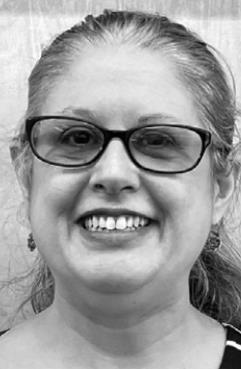
Answers to Go
SAN MARCOS PUBLIC LIBRARY 625 E. HOPKINS ST. 512-393-8200
Q. I am intrigued by abstract art. Who painted the first abstract painting?
A. Hilma af Klint, 1862-1944, is often spoken of as one of the first (and certainly the first female) abstract artists. While other artists like Wassily Kandinsky and Piet Mondrain were instrumental in the abstract movement, af Klint’s work predated those artists. Because she never had a showing in her lifetime and her work was not termed “abstract” until many years after her death, she has not been acknowledged by the art community at large as producing the first abstract art. In fact, her work was not displayed in an international venue until 1986 when it was first shown in Los Angeles.
Born in 1862 to an aristocratic family, Hilma af Klint was afforded an excellent home education and was supported in her talents by her father. She was exposed as a teen to theosophy, a religious movement based on the principle that knowledge of God may be achieved through spiritual ecstasy, direct intuition or special individual relations. It was founded by Russian Helena Blavatsky and was the first religious organization in Europe that did not discriminate against women. Also termed “spiritualism,” theosophy was very much in fashion in the late 180 and early 1900s and also significantly influenced her work. However, it wasn’t until the death of her younger sister in 1880 that she began her spiritual journey in earnest. Theosophy and other spiritual movement such as Rudolph Steiner’s anthroposophy influenced her work, but that was no the only inspiration.
The other “movement” that played a large part in her own personal philosophy and later in her art was science. Atom radio waves, black matter and biology were being explored and discussed by the general public at this time. People were beginning to realize that much of the physical world, like the atom and radio waves, was invisible to the naked eye. This influenced af Klint’s art. The body of her work, especially those deemed “abstract” by future generations, was an effort to delve into the unseen — the invisible. This is discussed in the documentary (available at the San Marcos Public Library) “Beyond the Visible: Hilma af Klint,” written and directed by Halina Dyrschka.
However abstract her later art was, she was originally trained as a classical artist. In 1882, she entered the Royal Academy in Stockholm, eventually establishing herself as a portraitist and landscape painter. By 1906, she had laid aside her traditional style for a different type of work, producing her first truly abstract work, the “Paintings for the Temple,” a series of images she said were dictated to her by her spiritual guides.
So why are so many people are not aware of af Klint’s role in abstract art? Was it because of her interest in the occult or was it because she was a woman? Perhaps it was because, as Nancy Heller states in her book, “Women Artists: An Illustrated History,” that “Her art has not been studied widely, as she did not exhibit her occult paintings during her lifetime and specified in her will that they should not be made public until twenty years after her death.” Art historians, artists and critics are still discussing the answer to these questions.
You may want to do your own research regarding this topic. The San Marcos Public Library has two of the few books about af Klint. “Hilma af Klint: Paintings for the Future” by Tracey Bashkoff and “Hilma AF Klint: The Art of Seeing the Invisible” by Hilma Af Klint (currently on order).
If you are interested in art in general, the library also has the Great Courses DVD series, “How to Look at and Understand Great Art.”
Suzanne Sanders is the new columnist for the Library. She is the Community Services Manager for the San Marcos Public Library and came from the Austin Public Library in 2015 after having served there as a librarian for over 20 years. She gratefully accepts your questions for this column.











